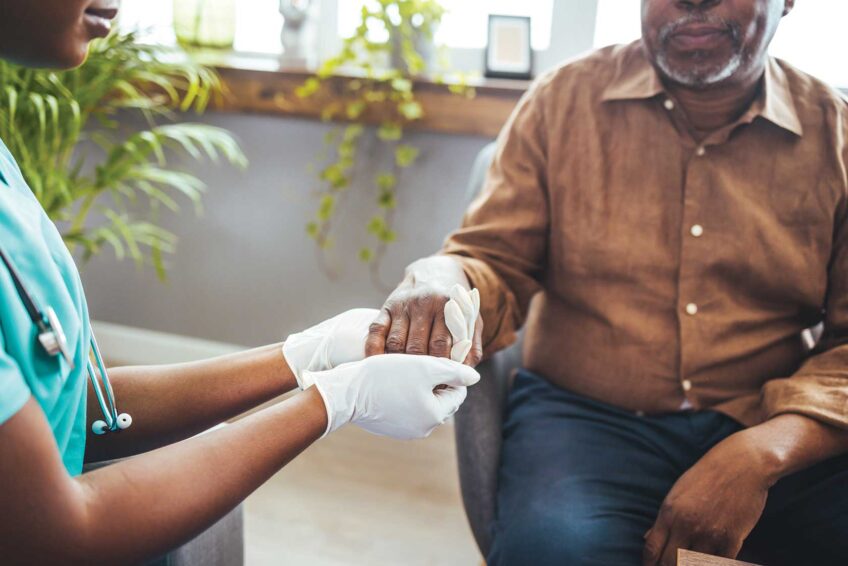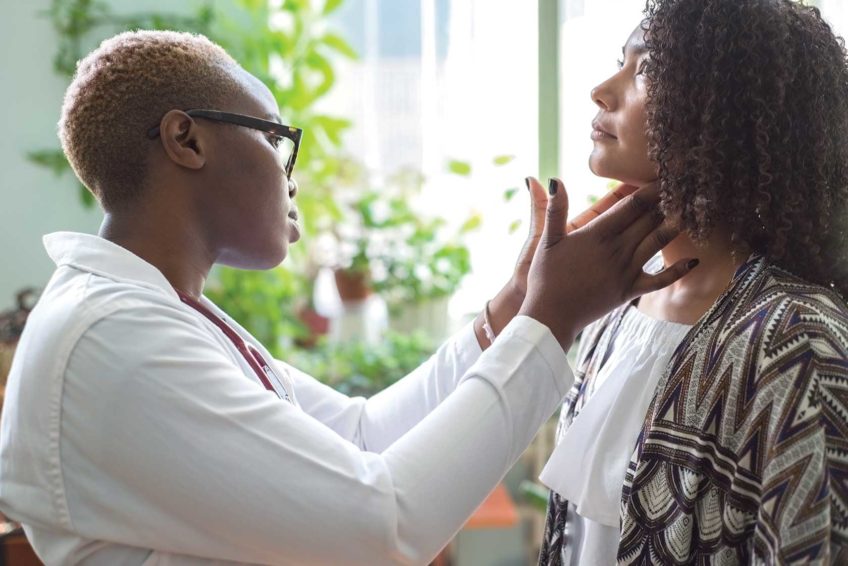Is it an infection … or is it breast cancer?
Inflammatory Breast Cancer
Contrary to common belief, breast cancer is not just one disease; it’s an umbrella of many different cancers, some of which may differ considerably. The American Cancer Society lists at least nine different types of breast cancer and several subtypes.
Another common misperception is that all breast cancers have lumps. But inflammatory breast cancer (IBC), a rare but aggressive form of the disease, is seldom detected by a lump. Rather, it changes the appearance of the breast. IBC strikes women younger than the typical age of incidence. It also occurs more frequently in black women, according to the National Cancer Institute, and those who are obese.
Dr. Beth Overmoyer, the director of the Inflammatory Breast Cancer Program at Dana-Farber Cancer Institute, is no stranger to IBC. “It’s known by its very rapid onset,” she explained. “Usually three to six months.” Or even overnight. The breast becomes warm, tender, enlarged and red, and the skin of the breast thickens, resembling the skin of an orange, she added. Many women initially ignore the symptoms of IBC, attributing the changes to a mosquito bite, a bruise or a transient infection.
Usually there is no mass or lump, which causes it to escape a mammogram’s detection. “A better imaging tool is the MRI,” she said. But she admits that a good old fashioned physical examination works well. “You can see it,” she explained.
While other types of cancers can affect one section of the breast allowing the possibility of breast-conserving surgery, IBC encompasses the entire breast. It enters the lymph vessels of the breast, which empty into the lymph nodes, allowing quick and ready access to the rest of the body. That’s how cancer cells spread. That also explains why once IBC is detected, it has already progressed to Stage III or Stage IV, indicating that it has moved beyond the confines of the breast.
IBC constitutes no more than 5 percent of all breast cancers, but, according to Dr. Overmoyer and other experts, its numbers are increasing. The problem of detecting IBC is two-pronged. Women have been educated to look for lumps — not physical changes in the breast itself. Unfortunately, because of its rarity, many doctors often do not recognize it either. Doctors unfamiliar with IBC initially treat for mastitis, an infection of the breast tissue. But mastitis is rare in women who are not breastfeeding or in postmenopausal women.
Because its symptoms mirror those of an inflammation, the first line of attack is typically antibiotics, but the results can be deceiving. “Sometimes redness waxes and wanes,” said Dr. Overmoyer. “Two weeks of antibiotics is not harmful,” she said. If the medicine has not done its job in two weeks, however, it’s best to see a surgeon that specializes in breast care.
There is some good news. A change in order of treatment strategy has increased survival rates. When chemotherapy precedes surgery (mastectomy) followed by radiation the five-year survival increased from about 10-15 percent to over 50 percent, according to Dr. Overmoyer. In some instances, additional chemotherapy is given after surgery as well as hormone treatment. Some experts believe that if IBC does not recur within three to five years of treatment, there is a greater chance of a cure.
Dr. Overmoyer offers simple advice. “If you notice some change [in your breast] just call your health care provider and have someone check it out,” she said. “Reassurance never hurt anyone.”






